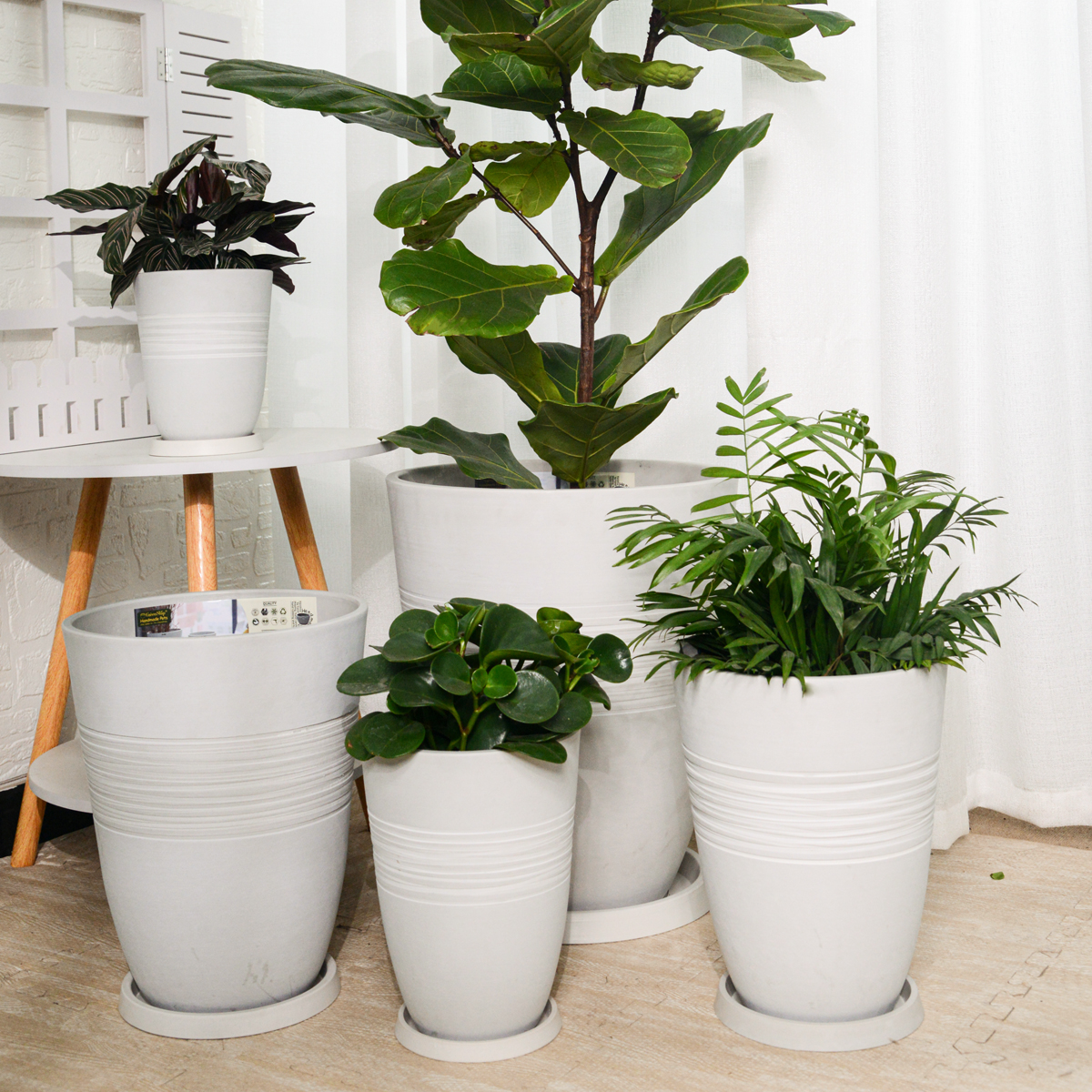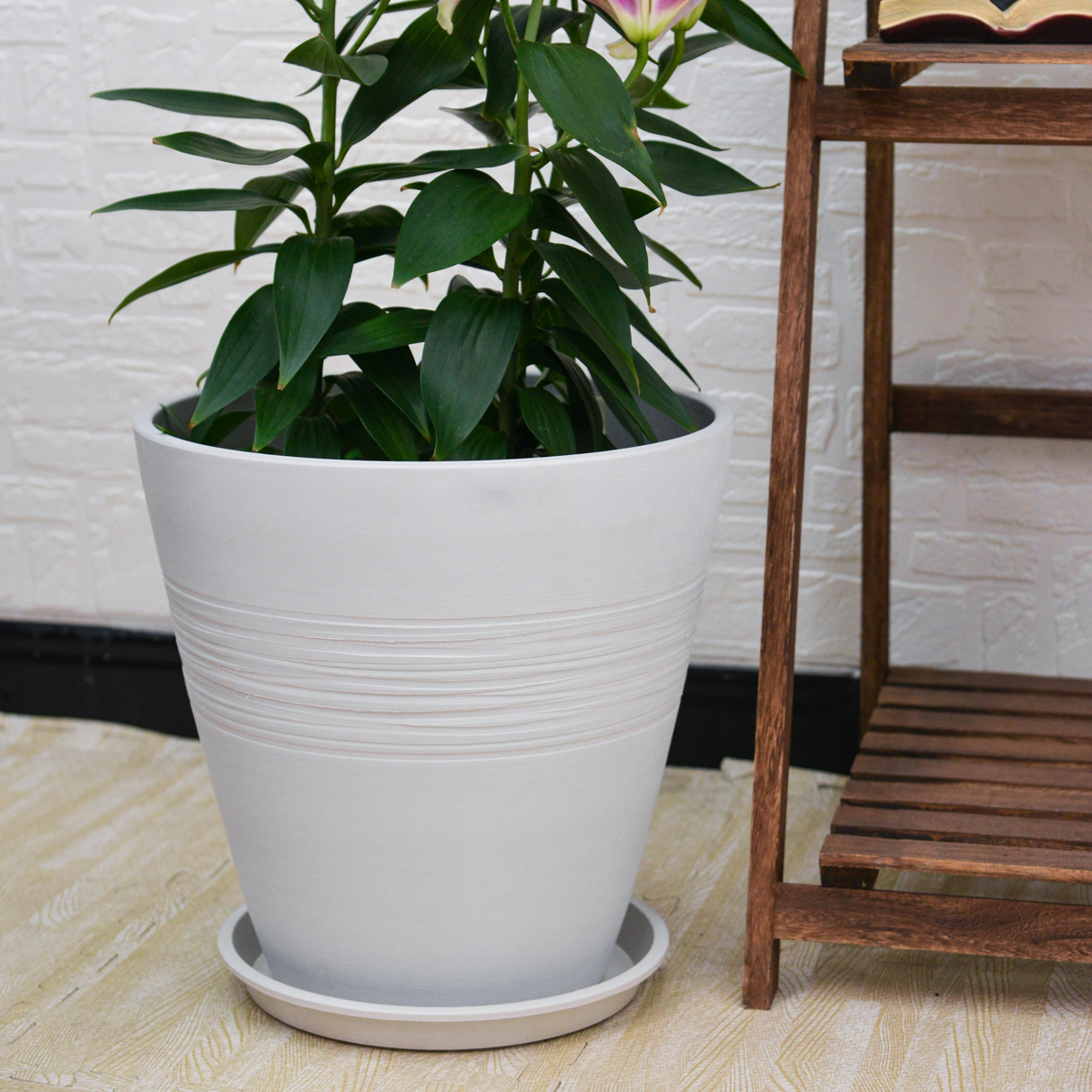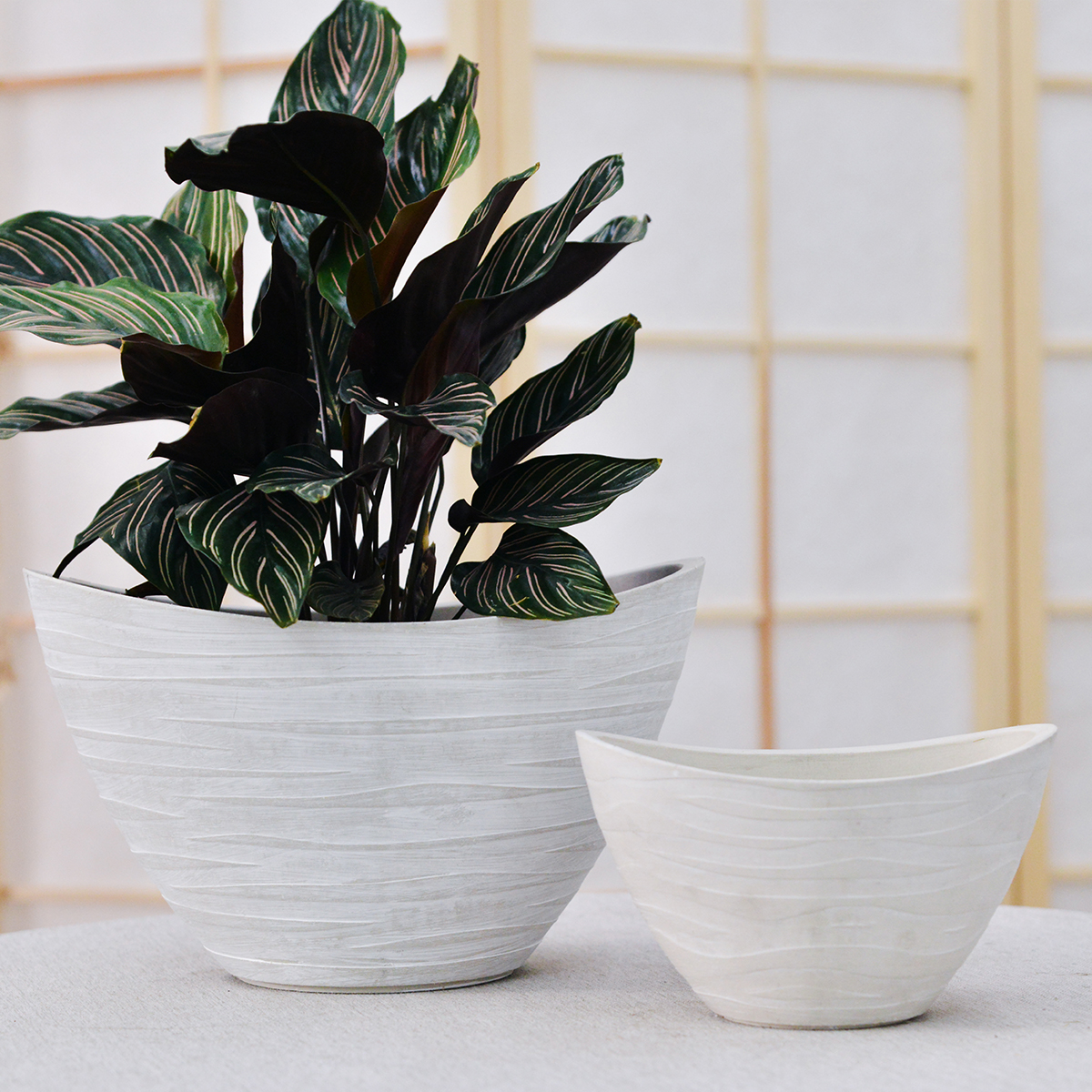Freesia in Pots: The Expert Guide to Growing Fragrant Freesia Outdoors in Containers
Want to perfume your patio, balcony, or garden with intensely fragrant, jewel-toned blooms? Freesia, celebrated for their exquisite fragrance and delicate, trumpet-shaped flowers, are wonderfully rewarding choices for outdoor container gardening. Prized for their intoxicating sweet scent, diverse flower colors from vibrant jewel tones to soft pastels, and their elegant, arching stems, Freesia are perfect for adding fragrance and color to sunny outdoor spaces. This comprehensive guide will provide you with everything you need to know to grow Freesia successfully in outdoor pots, from selecting the best varieties and containers to mastering essential care techniques for a season filled with Freesia fragrance and beauty.
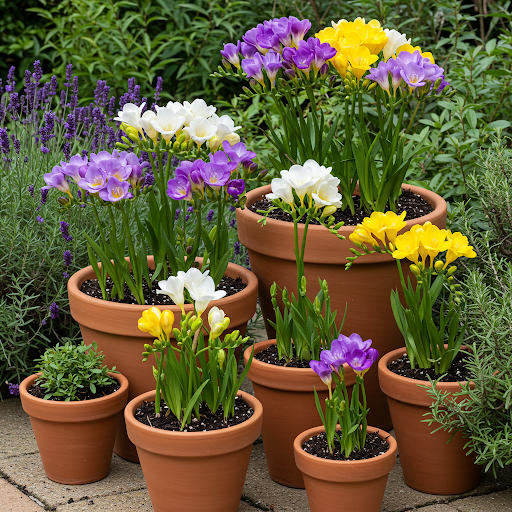
Freesia
What are Freesia?
Freesia, named after German botanist Friedrich Heinrich Theodor Freese, is a genus of herbaceous perennial flowering plants in the Iridaceae family (iris family). Native to the southern tip of Africa, particularly South Africa, Freesia are beloved bulbous perennials grown for their intensely fragrant and gracefully arching sprays of flowers. Freesia flowers are famous for their exquisite, sweet fragrance, often described as fruity, honey-like, or reminiscent of jasmine, and their delicate, trumpet-shaped blooms that open in a one-sided comb-like arrangement along slender, arching stems. They come in a wide range of colors, including white, cream, yellow, gold, orange, pink, rose, red, purple, lavender, and bi-colors, often with contrasting throats or markings. Freesia plants are characterized by their upright, slender, grass-like foliage that emerges from underground corms (bulb-like structures). They exhibit a clumping, upright growth habit, ranging in height from dwarf varieties under 1 foot to taller types around 2 feet tall, depending on the cultivar. They are known for their intoxicating fragrance, delicate flower form, wide range of colors, relatively long blooming season (spring to summer, depending on type), sun-loving nature, and excellent cut flower quality, making them an invaluable addition to gardens and containers, especially for adding fragrance and elegant beauty.
Are Freesia Good for Outdoor Pots?
Yes, Freesia are exceptionally well-suited for outdoor pots and container gardening, especially dwarf and compact varieties. Their upright, clumping growth habit, relatively long blooming season, tolerance of sunny locations, and exquisitely fragrant flowers make them ideal for filling pots, patio containers, and window boxes with delightful scent and color. Freesia thrive in sunny locations and bloom profusely in spring and early summer, providing a long-lasting and fragrant display in containers. Their relatively easy-care nature and breathtaking fragrance make them a fantastic and rewarding choice for container gardens of all styles, especially for adding a touch of romantic charm to patios, balconies, and decks. Growing Freesia in pots also allows you to easily move them to optimal locations to best enjoy their fragrance, to protect them from harsh winter conditions in colder climates, and to control their growing conditions, especially soil drainage which they appreciate.
Ideal Growing Conditions for Freesia in Pots:
Types of Freesia for Pots: Many Freesia varieties are excellent for pots, but consider your desired height, flower color, bloom time, and fragrance intensity when choosing:
- Dwarf Freesia: (Under 1 foot tall) – Compact and smaller in stature, ideal for small to medium pots, window boxes, and foreground plantings. Known for their very compact habit and profusion of blooms on shorter stems. Excellent for smaller containers and tighter spaces. Look for varieties in the ‘ Ballerina Series’, ‘ Bambi Series’, ‘ Marina Series’, ‘ F1 Fantasy Series’ (dwarf mixes), and ‘ Miniatures Mixes’.
- Medium-Sized Freesia: (1-2 feet tall) – Bushy and more upright, but still manageable for containers, suitable for medium to large pots, patio containers, and as thrillers in mixed arrangements. Offer a good balance of height and flower power in pots. Look for single and double-flowered Freesia hybrids, and older varieties like ‘ Роман Empire’, ‘ Корнелия’, ‘ Golden Yellow’, ‘ Blue Heaven’, ‘ Alba’, and ‘ refracta alba’.
- Double Freesia (for Pots): (Varieties with fuller, double flowers) – Select double-flowered varieties for a more opulent, rose-like bloom form and often richer fragrance. Double Freesia are excellent for cut flowers and adding a touch of luxury to containers. Look for varieties in the ‘ Double Delight Series’, ‘ Ройал Crown Series’, ‘ Двойной Blue’, ‘ Двойной Yellow’, ‘ Двойной White’, and ‘ Fragrant Doubles Mix’.
- Scented Freesia (for Pots): (Varieties known for strongest fragrance) – All Freesia are fragrant, but some varieties are particularly prized for their intense perfume. Look for older heirloom varieties, single-flowered types, and those specifically labeled as “highly fragrant” or “intense scent”. Varieties like Freesia refracta alba, ‘ Роман Empire’, ‘ Корнелия’, ‘ Alba’, ‘ Golden Yellow’, and many older single-flowered hybrids are known for exceptional fragrance.
- Color Themes (for Pots): Choose varieties based on your desired color palette for your container garden.
- Whites & Creams: Freesia refracta alba (pure white, intensely fragrant), ‘ Alba’ (creamy white, classic), ‘ White Swan’, ‘ Creme Bonjour’, ‘ Snowdrift’.
- Yellows & Golds: ‘ Golden Yellow’ (rich gold, intensely fragrant), ‘ Корнелия’ (deep yellow, heirloom), ‘ Buttercup’, ‘ Sunlight’, ‘ Yellow River’.
- Pinks & Roses: ‘ Роман Empire’ (deep rose-pink, intensely fragrant), ‘ Pink Devotion’, ‘ Rosalie’, ‘ Ballerina Pink’, ‘ Fantasy Pink’.
- Purples & Blues: ‘ Blue Heaven’ (lavender-blue, fragrant), ‘ Royal Blue’, ‘ Lavender Magic’, ‘ Purple Rain’, ‘ Amethyst’.
- Oranges & Reds: ‘ Red Baron’ (bright red), ‘ Orange Sherbet’, ‘ Mandarin’, ‘ Sunset’, ‘ Firecracker’.
- Mixed Colors: ‘ Rainbow Mix’, ‘ Pastel Mix’, ‘ Jewel Tones Mix’, ‘ Fragrant Freesia Mix’, ‘ Dwarf Fantasy Mix’.
Light: Freesia thrive in full sun to partial shade. They need at least 6 hours of direct sunlight per day for best blooming and vibrant colors. In hotter climates, or for afternoon sun on balconies, partial shade, especially during the hottest part of the day, can be beneficial to prevent scorching and prolong bloom time. Choose a sunny location for your Freesia containers, such as a south-facing patio, balcony, or garden bed, or a location with morning sun and afternoon shade. In too much shade, Freesia will produce fewer blooms and stems may become weak and leggy.
Soil: Freesia need well-draining soil that is moderately fertile and slightly acidic to neutral. Use a high-quality potting mix specifically formulated for containers or flowers. Amend potting mix with perlite, vermiculite, or horticultural grit to improve drainage and aeration, which is important for Freesia corms to prevent rot. Freesia prefer soil that retains some moisture but is not soggy. Avoid heavy, compacted soil or garden soil in pots, as they can become waterlogged. A slightly acidic to neutral pH (around 6.0-7.0) is ideal for Freesia.
Watering: Freesia prefer moderately moist soil during their active growing and blooming season (fall to spring). Water thoroughly when the top inch of soil feels dry. Water deeply until water drains out of the drainage holes. Allow the soil surface to dry out slightly between waterings. Avoid overwatering and constantly wet soil, especially during their dormant period in summer. Watering frequency will depend on weather conditions, light levels, pot size, and plant size. During active growth in spring, and especially during dry spells, you may need to water more frequently. Check soil moisture regularly and adjust watering accordingly. Reduce watering significantly after blooming when foliage starts to yellow and die back, as plants enter dormancy. Water very sparingly in summer dormancy if pots are kept in a sheltered, dry location, just enough to prevent complete drying out of the soil.
Temperature: Freesia are cool-season plants that thrive in mild temperatures. They perform best in temperatures between 50°F to 65°F (10°C to 18°C) during their active growing and blooming period (fall to spring). They prefer cool nights and mild days. Hot temperatures above 70°F (21°C) can shorten bloom time and stress plants. Freesia are frost-tender and are not cold-hardy. They are typically grown as annuals in colder climates (USDA zones below 9). In USDA zones 9-10, Freesia can be perennials if their corms are protected from frost and excessive summer heat. Potted Freesia are easy to move to a cool, bright location to prolong bloom time in warmer climates, and to protect from frost in colder zones. They do not tolerate hard freezes.
Fertilizer: Freesia are light to moderate feeders and benefit from moderate fertilization to support their blooming season and healthy growth. Over-fertilizing can lead to leggy growth and reduced fragrance. Fertilize sparingly to moderately during the active growing season (fall to spring) with a balanced liquid fertilizer (e.g., 10-10-10 or 20-20-20) diluted to half strength, every 4-6 weeks. Alternatively, you can use a slow-release granular fertilizerincorporated into the potting mix at planting time, but use it at a lower rate than recommended for other flowering plants. Avoid high-nitrogen fertilizers, which can promote leafy growth at the expense of blooms and fragrance. Bone meal or a fertilizer slightly higher in phosphorus can encourage better flowering. Cease fertilizing after blooming when foliage starts to die back and plants enter dormancy.
Choosing the Right Pots for Freesia:
Suitable Pot Types: Freesia are adaptable to various pot types, but terracotta and other well-draining pots are recommended due to their need for good drainage. Consider these factors when selecting pot types for Freesia:
- Terracotta Pots: Porous, allow excellent aeration and drainage, and aesthetically natural and warm-toned, complementing Freesia’s delicate beauty. Terracotta is a good choice for Freesia as it helps prevent overwatering and promotes good bulb health. Terracotta pots also dry out more quickly, which is generally beneficial for Freesia, helping to avoid soggy soil. Monitor soil moisture and water as needed.
- Unglazed Ceramic Pots: Similar to terracotta, unglazed ceramic pots offer good aeration and drainage. Choose unglazed ceramic over glazed for better breathability.
- Plastic or Resin Pots (with caution): Plastic and resin pots retain moisture much more than terracotta, which can be problematic for Freesia if overwatered. If using plastic or resin pots, ensure excellent drainage holes, and be extra careful with watering, allowing the soil to dry out more between waterings. Amend potting mix aggressively with perlite or grit to improve drainage when using plastic pots. Lighter colored plastic pots may heat up less in direct sun.
- Window Boxes & Long Planters: Freesia, especially dwarf varieties, look beautiful massed in window boxes and long planters, creating a fragrant and colorful display. Ensure good drainage and adequate spacing between bulbs.
- Avoid Deep, Water-Retaining Pots: Freesia prefer shallower to medium-depth pots and dislike constantly wet feet. Avoid very deep pots or pots without drainage holes that can lead to waterlogged soil and bulb rot.
Drainage: Excellent drainage is essential for Freesia to prevent bulb rot and ensure healthy growth and flowering. Ensure your chosen pot has large and ample drainage holes at the bottom. Avoid pots without drainage holes. Adding a generous layer of drainage material at the base of the pot is highly recommended, such as a 2-3 inch layer of gravel, perlite, horticultural grit, or pot shards to further improve drainage, especially in heavier pots or when using plastic pots. Elevating pots slightly on pot feet or bricks can further improve drainage and air circulation around the base.
Pot Size: Choose pot sizes appropriate for the type and mature size of the Freesia you are planting, and the desired display. Freesia bulbs (corms) multiply over time, but they generally do not need excessively large pots.
- Dwarf Freesia: For dwarf Freesia, pots that are 6-8 inches in diameter and at least 6 inches deep are suitable for planting 5-7 bulbs per pot for a full display. For mass plantings or window boxes, use larger containers or window boxes with spacing of about 2-3 inches between bulbs.
- Medium-Sized Freesia: For medium-sized Freesia varieties, use pots that are 8-10 inches in diameter and at least 8 inches deep for planting 5-7 bulbs per pot. For fuller displays or mixed plantings, use pots that are 10-14 inches or larger, or larger tubs, spacing bulbs about 3-4 inches apart.
- Window Boxes & Planters: For window boxes or long planters, plant Freesia bulbs about 2-4 inches apart, depending on bulb size and variety. Ensure adequate depth for root growth (at least 6-8 inches deep).
Color and Style: Choose pot colors and styles that complement your Freesia blooms and your outdoor décor. Pastel shades, white, cream, or soft-toned pots can enhance the delicate beauty of Freesia flowers. Terra cotta or natural-look pots can provide a warm, earthy contrast to their jewel-toned or pastel blooms. Elegant or classic pot styles, such as urns, decorative ceramic pots, or wicker baskets, can enhance the romantic charm of Freesia. Consider the overall style of your patio or garden and choose pots that harmonize with the surroundings, and enhance the fragrant, elegant ambiance you wish to create.
Essential Care Tips for Thriving Freesia in Outdoor Pots:
- Planting Time: Plant Corms in Fall (Zones 9-10) or Spring (Zones below 9). In USDA zones 9-10 (mild winter climates), plant Freesia corms in fall (September-November) for spring blooms. In colder zones (below 9), plant Freesia corms in early spring (after last frost, March-May) for late spring to early summer blooms.
- Planting Depth & Spacing: Plant Corms 2-3 Inches Deep, 2-4 Inches Apart. Plant Freesia corms pointy-end up, about 2-3 inches deep in well-draining potting mix. Space bulbs 2-4 inches apart, depending on pot size and desired density.
- Watering: “Water When Top Inch of Soil is Dry, Avoid Overwatering”. Water thoroughly when the top inch of soil feels slightly dry during the growing season (fall to spring). Water deeply until water drains from drainage holes. Allow soil surface to dry slightly between waterings. Avoid overwatering and soggy soil. Reduce watering significantly after blooming and during summer dormancy.
- Sunlight: Provide Full Sun to Partial Shade (6+ Hours Daily). Place Freesia pots in a location that receives full sun to partial shade, with at least 6 hours of direct sunlight daily, or morning sun and afternoon shade in hotter climates.
- Fertilizing: Fertilize Sparingly to Moderately, Every 4-6 Weeks During Growing Season. Fertilize every 4-6 weeks with a dilute balanced liquid fertilizer, or use slow-release fertilizer at planting time at a lower rate. Avoid over-fertilizing.
- Staking (Optional, For Taller Varieties): Taller Freesia varieties may benefit from staking to prevent flower stems from bending or breaking, especially in windy locations or when blooms are heavy. Use bamboo stakes or small plant supports to provide support as needed. Dwarf varieties generally do not need staking.
- Deadheading (Encourage Continuous Bloom & Tidiness): Deadhead spent flower stalks regularly to encourage more blooms and maintain a tidy appearance. Snip off faded flower stalks at the base. Regular deadheading can prolong bloom time and encourage more flower production.
- Foliage Care (Allow Foliage to Die Back Naturally): Allow Freesia foliage to die back naturally in late spring or summer after blooming. Do not cut back green foliage, as it helps to nourish the bulbs for next year’s growth (in perennial zones). Once foliage has completely yellowed and dried, you can trim it back to the base.
- Dormancy (Summer Dormancy is Essential): Freesia naturally go dormant in summer after blooming. After foliage dies back, reduce watering significantly and allow the bulbs to rest in dry soil during the summer months.
- Overwintering (Protect from Hard Freezes in Cold Climates): In colder USDA zones (below zone 9), Freesia corms are not reliably hardy and need to be protected from hard freezes. In zones 9-10, potted Freesia can generally overwinter outdoors with minimal protection in a sheltered location. In colder zones, you can treat Freesia as annuals and replant new corms each spring, or you can lift the corms in fall after foliage dies back, store them in a cool, dry place over winter, and replant them in spring. To lift corms, carefully dig them up after foliage yellows, gently clean off excess soil, allow them to air dry for a few days, and store them in mesh bags or trays in a cool, dry, dark location until spring planting time.
- Pest and Disease Control: Freesia are generally relatively pest and disease-resistant. Monitor for occasional pests like aphids, spider mites, or thrips. Bulb rot can occur in poorly drained soil or overly wet conditions. Ensure excellent drainage and avoid overwatering to prevent bulb rot.
Popular Freesia Cultivars for Pots (by Type/Color/Fragrance):
- Dwarf Freesia: ‘ Ballerina’ (mixed dwarf colors, compact, fragrant), ‘ Bambi’ (yellow dwarf, early blooming), ‘ Marina’ (blue dwarf, compact habit), ‘ F1 Fantasy Mixed’ (dwarf mix, various colors, fragrant), ‘ Miniatures Mix’ (mixed dwarf colors, small pots).
- Medium Freesia: ‘ Роман Empire’ (deep rose-pink, intensely fragrant, classic), ‘ Корнелия’ (deep yellow, heirloom, strong scent), ‘ Golden Yellow’ (rich gold, fragrant, reliable), ‘ Blue Heaven’ (lavender-blue, fragrant, unique color), ‘ Alba’ (creamy white, classic, fragrant), Freesia refracta alba (pure white, intensely fragrant, heirloom).
- Double Freesia: ‘ Double Delight Mixed’ (double mix, various colors, fuller blooms), ‘ Ройал Crown’ (yellow double, opulent flowers), ‘ Двойной Blue’ (lavender-blue double, unique color), ‘ Двойной Yellow’ (yellow double, rich color), ‘ Двойной White’ (white double, elegant).
- Scented Freesia (Highly Fragrant): Freesia refracta alba (pure white, heirloom, strongest fragrance), ‘ Роман Empire’ (deep rose-pink, intense perfume), ‘ Корнелия’ (deep yellow, heirloom, strong scent), ‘ Golden Yellow’ (rich gold, reliable fragrance), ‘ Alba’ (creamy white, classic scent), ‘ эфирный Oil’ (mixed colors, bred for fragrance).
- Color Themes (Examples):
- White/Cream: Freesia refracta alba, ‘ Alba’, ‘ White Swan’, ‘ Creme Bonjour’, ‘ Snow White’.
- Yellow/Gold: ‘ Golden Yellow’, ‘ Корнелия’, ‘ Buttercup’, ‘ Yellow River’, ‘ Gold Rush’.
- Pink/Rose: ‘ Роман Empire’, ‘ Ballerina Pink’, ‘ Pink Devotion’, ‘ Rosalie’, ‘ Rose Marie’.
- Purple/Blue: ‘ Blue Heaven’, ‘ Royal Blue’, ‘ Lavender Magic’, ‘ Purple Rain’, ‘ Blue Velvet’.
- Orange/Red: ‘ Red Baron’, ‘ Mandarin’, ‘ Orange Sherbet’, ‘ Firecracker’, ‘ Sunset Glory’.
In Summary:
Growing Freesia in outdoor pots is a wonderfully rewarding way to fill your patios, balconies, and gardens with intoxicating fragrance and delicate, jewel-toned blooms in spring and early summer. Their exquisite scent, elegant flower form, wide range of colors, relatively long blooming season, adaptability to sunny to partially shaded locations, and relatively easy-care nature (especially with well-draining soil and moderate watering) make them a perfect choice for container gardeners seeking fragrant, spring-blooming plants. By providing full sun to partial shade, well-draining potting mix in pots with drainage, watering appropriately and avoiding overwatering, fertilizing sparingly to moderately during the growing season, deadheading spent flowers, and protecting corms from hard freezes in colder climates, you can easily cultivate thriving Freesia plants in pots and enjoy their captivating fragrance and delicate beauty each spring.
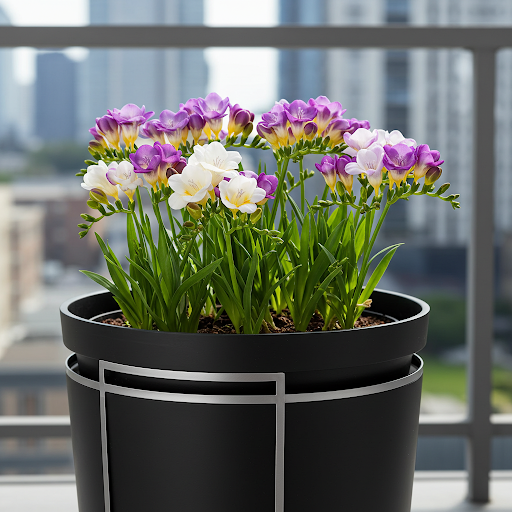
Freesia
For more detailed botanical information and to explore the diverse world of Freesia species and cultivars, you can visit the Wikipedia page on Freesia.
Important Note: Freesia plants are generally considered non-toxic to humans and pets, making them a safe and attractive choice for households with children and animals. The primary care benefits of Freesia in pots are their exceptionally strong and beautiful fragrance, delicate and charming flower forms in a wide range of colors, and relatively easy care, bringing delightful scent and elegant beauty to your outdoor spaces each spring. With these simple care practices, you can enjoy a season filled with the enchanting fragrance of Freesia in your outdoor containers.
20VD
By greenship|2024-08-13T06:43:41+00:00August 13, 2024|Categories: Hand-carving Series|
Modern Plant Pots with Drainage – Indoor & Outdoor Use (6″ Widths)
By greenship-seo|2025-04-10T06:29:43+00:00February 6, 2025|Categories: Hand-carving Series|Tags: Decorative Flower Pots|
KC2-11VH
By greenship|2024-08-16T06:19:28+00:00August 16, 2024|Categories: Hand-carving Series|
KC2-GS
By greenship|2024-08-16T06:30:21+00:00August 16, 2024|Categories: Hand-carving Series|
KC2-11V
By greenship|2024-08-16T05:39:50+00:00August 16, 2024|Categories: Hand-carving Series|
20YB
By greenship|2024-08-16T05:37:57+00:00August 16, 2024|Categories: Hand-carving Series|



